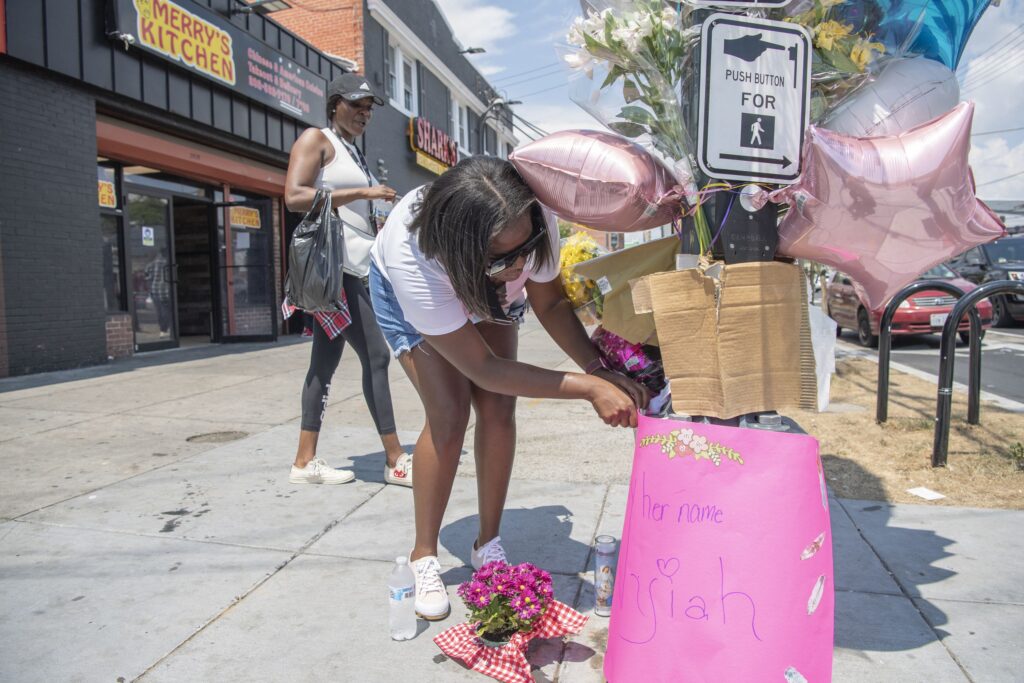On track to clock its deadliest year in more than two decades, Washington, DC is a fitting microcosm of the general state of emergency in the US
The capital of the United States of America is threatening to reclaim its reputation as the nation’s murder capital, as well.
According to preliminary data for 2023 from Washington, DC’s Metropolitan Police Department, a total of 214 homicides had been committed in the metropolis as of September 29, constituting a 37 percent increase over last year. This is the first time in a quarter-century that Washington’s homicide count has exceeded 200 before October.
Victims include 10-year-old Arianna Davis, who received a stray bullet to the head on Mother’s Day; 16-year-old Jamal Jones, shot near his high school on September 25; and 31-year-old father of four Nasrat Ahmad Yar, a Lyft driver shot on Capitol Hill in July.
Ahmad Yar had fled Afghanistan after serving as a translator for the US armed forces, only to end up a casualty of US gun violence in imperial headquarters itself – a morbid twist, no doubt, on the theme of “bringing the war home”.
As usual, the bulk of this year’s homicides have taken place in Washington’s poorer neighbourhoods, which, in keeping with the system of racist classism that passes for democracy in the US, also happen to be the city’s Blacker neighbourhoods.
But why the spike in killings in the nation’s capital when various other major US cities are experiencing a post-pandemic decline in the homicide rate?
Of course, the “tough-on-crime” crowd has its own convenient explanations for the trend, such as that wishy-washy criminal justice policies in Washington let people get away with murder and that there aren’t enough police. Never mind the intermittently homicidal behaviour of the police themselves, like in March when a DC officer fatally shot Black teenager Dalaneo Martin in the back.
And as if a militarised police force weren’t enough, the likes of Washington, DC Councilmember Trayon White have called for the deployment of the National Guard on local streets to deal with the “state of emergency” and veritable “war zone”. After all, there is clearly nothing more conducive to a cohesive and harmonious society than making folks feel like enemy combatants in their own land.
Back in 2015, incidentally, the National Guard was unleashed on the streets of nearby Baltimore, Maryland – another traditionally notorious homicide hotspot – to quell protests following the death of Freddie Gray, a 25-year-old Black man whose spine had mysteriously ended up “80 percent severed” while he was in police custody for the crime of “running while Black”.
An official state of emergency was declared in Baltimore, which just underscored the often inextricable links between “states of emergency” and state violence.
Washington, DC, meanwhile, has long been what you might call a “state of emergency” for people of colour. In fact, the US capital’s peculiar status as a non-state – and its corresponding dearth of political representation – is the result of a historical effort to disenfranchise Black Americans. That racial injustice remains so institutionalised at the very epicentre of the US political machine is ultimately only fitting for a nation founded on white supremacy and oppression.
In addition, the gentrification that has come to define the Washington, DC area is a sinister form of racism cast as development. And what do you know? As the sociologist Tanya Golash-Boza, author of, Before Gentrification: The Creation of DC’s Racial Wealth Gap, recently commented to me, “DC neighbourhoods that are undergoing gentrification and have high levels of inequality are hotspots for homicides today.”
Remarking on Washington’s previous stint as the country’s murder capital in the late 1980s and early 1990s, Golash-Boza attributed the high homicide rates in those years to “disinvestment in Black communities” as well as the “availability of handguns” and the “particularities of the developing market for crack cocaine”. As any student of the crack epidemic knows, the powers that be in the US consciously utilised the drug to subjugate Black communities.
Golash-Boza went on to stress that the current surge in homicides in Washington would be most effectively addressed via mechanisms to “mitigate the effects of intense inequality” in the city, rather than by going down the old police-and-prisons route of the 1990s that led to mass incarceration and attendant societal devastation.
But old habits die hard, and local progressive criminal justice reforms of recent years are now being rolled back in favour of a more “mano dura” attitude. This is at least a handy way to refocus the blame for violence on individuals who are themselves products of violent contexts rather than on, say, a US arms industry that makes a killing off of killing – and that has turned mass shootings into an unofficial national pastime.
The tough-on-crime approach also helpfully distracts from the fact that life for a whole lot of people in the US is about being antagonised at every turn by a government that denies them opportunities and basic rights, from healthcare and education to housing and nutrition. In the end, of course, humans can’t all be equal under capitalism – since equality would defeat the whole purpose.
But when you’ve got a whole lot of people with nothing to lose inhabiting a landscape saturated with firearms, it should be no surprise when a “war zone” results.
As Washington, DC remains on track to clock its deadliest year in more than two decades, it is a fitting microcosm of a general state of emergency in the US, where the systemic devotion to racist capitalism trumps the professed right to “life, liberty and the pursuit of happiness”. And as the bodies continue to pile up, it’s time we talked more about whose war this really is.
Source: Aljazeera


